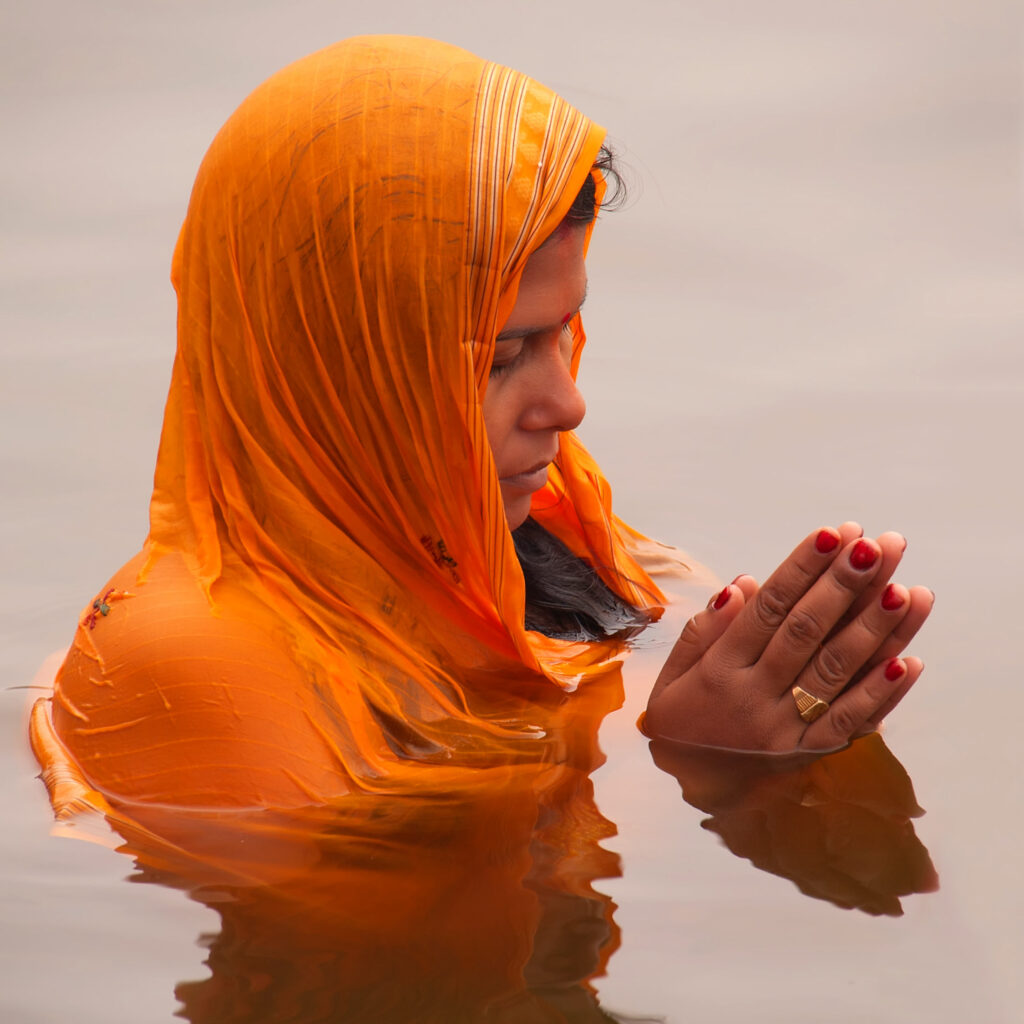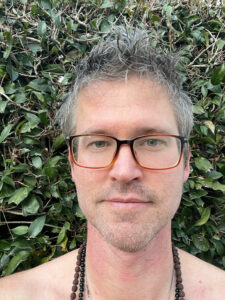Auṁ Śri Śri Gurave Namaḥ
“About suffering they were never wrong,
The Old Masters: how well they understood
Its human position…”
If Auden’s Old Masters understood suffering, the ancient Rishis understood Life. These were saintly men and women whose direct perception of Truth attained through meditative ecstasy and recorded in the mantric hymns of The Vedas, have echoed down the millennia for the benefit of the world. The four Vedas lay out ways in which man may stand in right relation to Divinity and Its Subsidiaries in the world, for both his spiritual and material prosperity. Later came the six vedangas that assist in the study and understanding of the four majors (of which Jyotiṣa, or Vedic Astrology, is a part), four supplementary upangas encompassing rules of investigation/inquiry, logic, histories and myths and rules for living and, finally, four additional vedas (also known as upavedas) were added: Āyurveda (medicine), arthaśastra (politics, economics and architecture), dhanurveda (warfare and martial arts) and gandharvaveda (music) for a total of 18 vidyāsthānas or abodes of knowledge.
Almost immediately, one is struck by the richness of the Vedic perception of human life: Spirit and the spiritual life stand front and centre but the Rishis cast their effulgent gaze on man’s more mundane concerns, too: Physical and mental wellness (including our intellectual and artistic aspirations), social harmony and nous and the way we relate to our broader environment (all the way up to the planets and the stars in the cosmos!). At the same time that one perceives this intellectually, there is an answering intuitive response from the heart that affirms the rectitude of this vision: “Yes!” it seems to say, “I am all of these things and all of these things are me!” There is no such breadth or unity in our modern approach to Life: Everything has been cramped into silos and a stingingly superficial materialism and we suffer greatly as a result.
Now that we have a very broad conception of the Vedic vision, let us touch on some additional concepts before reifying the vision in practical examples. First, cosmology. There are multiple ways to address this but to keep it simple, we have as follows: God, as a singularity, divided Godself into two: A positive and a negative pole (Father and Mother, respectively). The Father casts bits of His consciousness out as seemingly separate souls and The Mother attracts Her soul fractions back to unity with Her. As a result of the action of the Father-Mother Dyad, beings are created with four parts: a soul (chitta), an ego (a sense of being a separate being, ahamkara) and a mind consisting of two parts: A God-attracted mind (discrimination, buddhi) and a body-attracted one (the sensory mind, manas). From this dyadic polarity, the three guṇas emerged as a trinity: Rajas (positive, the activating or energetic principle; granting the organs of action: vocal complex, arms and hands, legs and feet, reproductive organs and eliminatory organs), tamas (negative, the clouding or condensing principle; granting the sensory objects) and sattva (neutral, the harmonising or uplifting principle; granting the organs of knowledge: Ears, skin, eyes, tongue and nose). From this trinity of polarities, the five elements emerged: Ether (positive), air (positive-neutral), fire (neutral), water (neutral-negative) and earth (negative). As a result of the further action and intermingling of the guṇas and elements on the abovementioned four parts, man emerged with his three bodies: A sattvic one (causal, magnetic), a rajasic one (astral, electric) and a tamasic one (physical, atomic).
And now that we understand how we got here, we can begin to Vedically feel our way through our various parts:
Physical-mental:
Given our understanding of our composition, we can now see that real physical health must involve working with the guṇas and elements both within our bodies as well as within the external world. As Swami Sri Yukteswarji says to Paramahansa Yogananda (both modern Rishis) in the latter’s epic, Autobiography of a Yogi: “Man, in his human aspect, has to combat two sets of forces – first, the tumults within his being, caused by the admixture of earth, water, fire, air and ethereal elements; second, the outer disintegrating powers of nature.” Āyurveda is just this study. And Jyotiṣa assists: The first gives the what of health and disease, the last gives the when of health and disease. Āyurveda combines the elements into three principles (known as doshas: Ether + air = vāta; fire + water = pitta; and water + earth = kapha) and uses these principles to ascertain both our underlying physical constitution (our prakruti) as well as our current constitution (our vikruti), which may, for various reasons, be different from each other. When these principles are in harmony, not necessarily a balance, health results; when one or a combination of these principles are pushed out of harmony with each other and with the person’s prakruti, disease results. To get back to health, Āyurveda uses various physical, mental or spiritual manifestations of the opposite qualities of the afflicted doshas to guide them back into harmony.
Similarly, real mental health must involve working with the gunas and elements. Where Āyurveda focuses on the doshas in physical health, the focus in mental health is on the gunas. Here one is trying to cultivate the sattva guna as much as possible, moving the mind at its natural pace from tamas, to rajas and then to sattva, the spiritual and uplifting principle mentioned earlier and the one most conducive to contact with and manifestation of the Divine.
Spiritual:
At last, we come to what is both the crown jewel as well as the very foundation of Life Vedic and modern: The spiritual. Here we return closer to the Father-Mother Dyad: the elements are of less importance, sattva guṇa is still emphasised and we start to focus more strongly on the buddhi and the chitta mentioned above. The exalted saint, Patañjali, in his storied Yoga Sutras, summarised the path back to our innate and natural Divinity in the following aphorism: “Yogaś citta vṛtti nirodhaḥ,” or, “Yoga (which means ‘union’ [with the Divine]) is the stilling of the scintillations of consciousness.” He also pointed out the universal steps we all must take on our journey homeward, known as The Eightfold Path of Yoga: Yama, niyama (the moral imperatives), asana (meditation posture), pranayama (life-force control), pratyahara (withdrawal of the consciousness from the sense organs and interiorisation of it into the spine and brain), dharana (spiritual concentration), dhyana (meditation or spiritual concentration on an aspect of the Divine) and samadhi (conscious union with the Divine). The Eightfold Path leads to the cessation of the scintillations of our consciousness; once calm, Divinity, Satchidananda (eternal, ever-conscious, ever-new Bliss), the Sole Reality and Great Goal of us all, becomes perceptible and then, through further Grace and practice, we melt back into It in samadhi. Note how active it all is: no mere fact of plain faith or belief. In the Vedic system, Truth is realised by direct experience that comes from right practice. As another modern Rishi, Lahiri Mahasaya and Paramahansa Yogananda proclaim: “Divine union is possible through self-effort and is not dependent on theological beliefs or the arbitrary will of a Cosmic Dictator. Through the use of the kriya key (a specific form of pranayama), persons who cannot bring themselves to believe in the divinity of any man will behold at last the full divinity of their own selves.”
Om Bhūr Bhuvaḥ Svaha
Tat-savitur Vareñyaṃ
Bhargo Devasya Dhīmahi
Dhiyo Yo Naḥ Pracodayāt
For medical consults: flourishmedi@gmail.com
For astro consults: snakelionstar@gmail.com
Instagram: @flourishcourse


